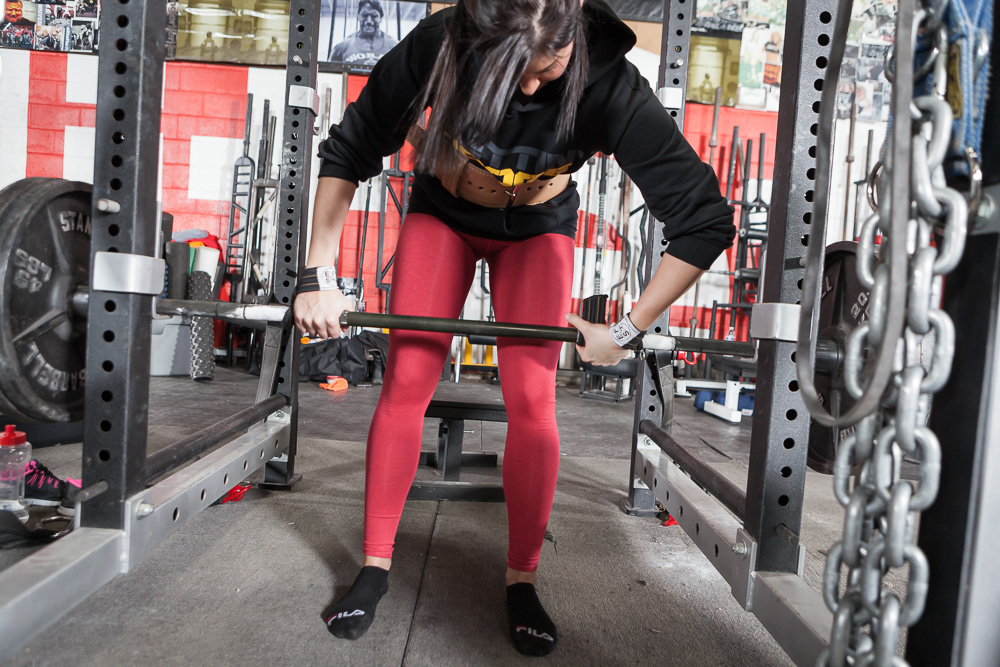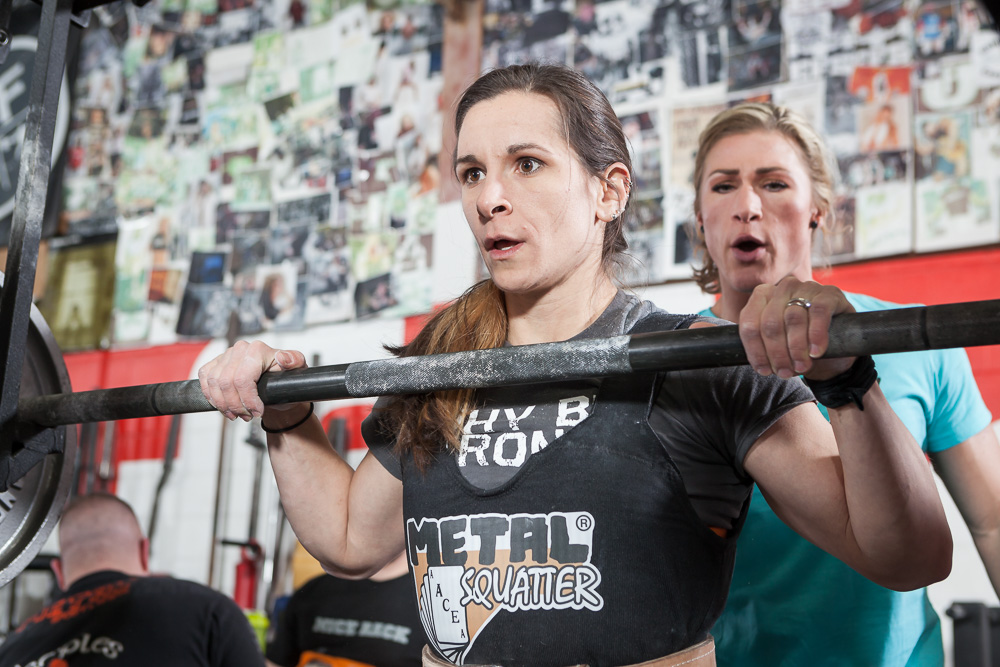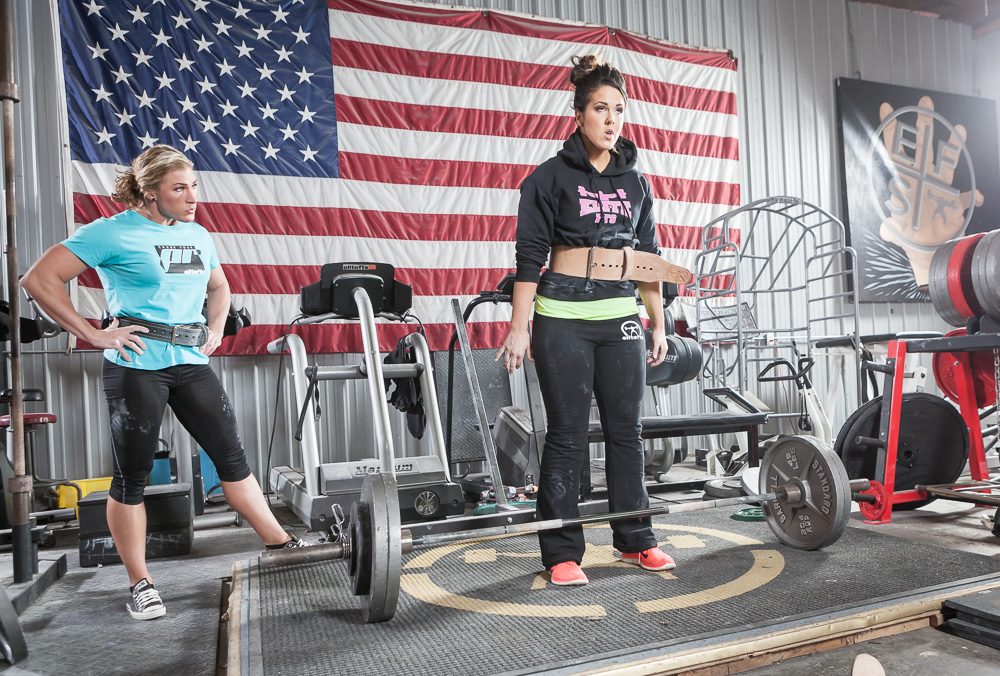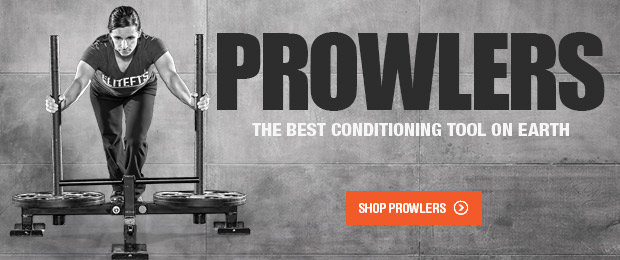
“Should women train like men?”
“Women should lift just like men do!”
The former question and the latter statement are commonly heard across the fitness sphere, and the popular answer is always to say, “Yeah, absolutely” to both. This answer is also wrong.
It isn't wrong because women shouldn’t lift or shouldn't train “heavy” but because the entire premise on which these statements are based is flawed. Saying that women should lift “like men do” creates a paradigm that lifting weights is somehow a “male” activity. Recreationally, sure, more men lift than women. And I understand the premise that when women go from not lifting to lifting, they experience some significant body changes. Then it creates this paradigm of, "What works for guys works for girls!" No. What works is that the human body gets challenged with resistance. That is what you did. Creating a premise that what you did is for "guys" is flawed though. You just lifted. So lifting weights like a man is simply a way of saying that you're lifting weights in a serious manner with the intentions of gaining muscle and getting stronger.
With that established, asking if women should train “like men” further contributes to this false paradigm. There are obvious and well established physiological and sexually dimorphic differences between men and women. Hence, copying what works for men and assuming that women are the exact same in regards to their needs is misguided. I bring this up because it does a disservice when it comes to training women as effectively as possible if you disregard these things. There are different needs, joint considerations and flexibility considerations as well as differing physiological qualities with endurance and top end strength. All of these things affect training. To say that they don't is to risk either not training as effectively as you could or training yourself or your female clients into pain. Specifically in the strength sports, the prevalence of lumbar, sacrum, SI joint, hip and pelvic issues in female lifters is a factor of how they're training. If you're getting stronger at the cost of being in more pain, something isn't working.
Considerations for Female Clients
Greater overall joint laxity: In general, women will have greater soft tissue laxity compared to men and will be more likely to be doubled jointed/hyperextended in their knees and elbows. Overall flexibility will be greater. There is always a difference between females who describe themselves as not being very flexible and men who do the same. My “tightest” female client was still more flexible than any of my male clients.
RELATED: The Fit Chick Reality
Possible hyper mobility in shoulders/hips and resultant compensations: With the lack of overall muscularity and joint laxity, the hips and shoulders can often achieve some extreme end ranges of motion, and overall passive range of motion can be very high. This changes performance mechanics for many exercises because women will have a tendency to "joint collapse” movements to achieve the requisite range of motion.
Inclination of trainers to confuse passive flexibility with active control: This is a very common scenario with the squat. A female client will readily hit depth, and the assumption is that she is ready for barbell squatting. In reality, she has no control over the range of motion at all and loading her too early can cause hip issues when her strength equalizes with her lack of control.
“Look at low she can squat!!” Yeah, because she's just bouncing out her hips and crashing the eccentric. As soon as the weight gets heavy, she’ll get stapled and/or injured.
Unequal muscular development between lower and upper torso and resulting lumbar/sacral issues: Women train their lower bodies way more than their upper bodies (three plates for the lower body and one plate for the upper equals joint issues). I've discussed this before, but women really neglect their backs. Because women find that their lower body is naturally stronger than their upper body, they focus on the deadlift and the squat and then never account for the fact that both these movements require stabilization of the spine. Stabilizing the spine mandates that the muscles around the spine be strong as hell. There is no “one” muscle that you need on your back. You need all of them to be developed. If you have weak lats, underdeveloped spinal erectors or no rhomboids, your squat will be limited by the compressive load tolerance of your spine.
Subsequently, there are many women who have lumbar/sacral issues because they are “bone loading” as I call it. Or they have hip issues because their core and abdominals are getting crushed under load and they have no idea how to brace. Additionally, learning how to lock down the rib cage and brace the torso is much easier when you have a lot of muscle on your torso.
Smaller joints and lack of joint reinforcement: This is especially an issue for women who have a petite structure. As they age, women are more likely than men to get arthritis in the hands and wrists. This is largely due to the lack of muscle/strength development in the joint. Often, arm/forearm work is neglected, ankle strength/stability isn't accounted for and there isn't any direct calf work, which some women could benefit from.
Wrist weakness affects both pressing and pulling. A broken wrist position can impede the performance of most any movement. It isn't something that just ‘works itself out.’ This also applies to all the other joints as well—elbows, shoulders, knees and ankles. Depending on a woman’s structure, she may benefit far more from targeted muscle work than a singularly obsessive focus on getting her compound lifts up.
Scapular instability (lack of overall back muscularity) and resultant trap elevation, elbow flare, grip positioning and pressing weakness: Again, a lack of back muscles affects everything. Horizontal rowing in all its forms has to be prioritized with women. Considering that most women have never trained their upper bodies ever, back and arm work needs to be a repetitive mainstay in any programming until the above are no longer issues.
Less muscular innervation and mind-muscle connection with upper body muscles: For women who have never trained their upper body, this takes time to develop. The current trend in the industry is to immediately utilize compound movements, but this isn't an effective approach. The majority of women have never trained their upper body, and developing a mind-muscle connection as well as building some muscle in general will take time. For that reason, machines, bands and isolation exercises in general are much more effective. Body weight movements can be done as well, provided they are regressed appropriately.
Grip strength and lack thereof: This is an issue that every trainer or coach I've ever talked to has experienced, yet it never gets talked about. If you can't grip the bar properly or apply much force to it to begin with, all your lifts are compromised when it comes to performance. Period.
You can improve grip strength with direct arm work, farmer's walks, all types of rows, dead hangs, chin-ups, static grip exercises for time and so on. If grip is an issue, start working on it immediately.
Wider hip structure and the need for multiple angles of resistance for complete glute/hip development and to ensure proper alignment/mechanics: There is a lot of talk about VMO and the predilection of female athletes to experience ACL tears, but this glosses over the larger issue, which is a woman's hips. Because they are wider compared to men, they will be under more stress at the knee and hip during all angles of movement and motion.
Relative to training then, muscular development should be examined from a global perspective. The concept that I teach to my staff is “north, south, east, west.” Quite simply, this means train the legs in the front, side and back directions. This isn't terribly scientific, but training all the potential directions of movement makes for phenomenal glute development and has a protective effect as well.
Greater propensity for ridiculous strength endurance: Below a certain intensity threshold, women can quite literally just keep producing reps, provided they get enough oxygen in between each. This tends to lead to either overestimating what a woman can lift at high intensities or underestimating when they insist on using only light weights, especially in untrained women. Many times, I've had a client insist that she can only get “a few reps” with a weight and then rip out 10–12 reps without much apparent exertion.
Lower maximal percentage threshold: Once you get past 90 percent, a three-rep max swiftly becomes a no rep max. Women take a long time to develop true absolute strength levels. Along with strength endurance though comes a trade-off with high percentage lifts. For various physiological reasons, untrained to intermediate women don't often have true one-rep maxes at all. This is most apparent on the bench press. For example, you may have a female client who gets reps with 85 pounds but gets stapled with 95 pounds. This has happened to many trainers. Because a woman's intensity threshold is lower in comparison to a man, women can actually perform a greater volume of work at a seemingly higher intensity.
A Lion in Iron: Fallacies in Female Diet Mindsets (Part 1)
Lesser aerobic and anaerobic fatigue/recovery time: I’ll give credit where it's due. Women tend to be far tougher than men when it comes to recovery time on energy systems work. The downside to this though is that women will often push themselves to exhaustion without you (the trainer) necessarily realizing it. Rather ironically, a woman who protests that the weights are too heavy will readily insist on finishing Prowler pushes even when she appears to be on the verge of collapse.
Always ask your female clients how they're doing during any conditioning activities. They won't always volunteer this information and crushing them inadvertently isn't something you want to do.
All Things Considered
All of these factors affect the programming and no two women are ever the same. Women have far greater variance than men with their anthropometrics and resulting movement habits or inclinations, but that isn't something that I can readily “list” other than to say that it takes experience to really notice and appreciate it.
Men and women do have different needs, and taking your females clients to their highest potential means recognizing and addressing those needs. Whether you're a trainer or you train by yourself, hopefully the above makes a positive impact in your training as a whole.














Right now I'm at the point where I'm not even trying to get gains anymore because I don't want my thighs to get infinitely bigger.... just doing lots higher reps and more sets at 90% of my body weight.
A superb resource for info on this is the PT Julie Wiebe's website/videos/courses, if you are not already familiar with her. There are other great people in women's health/sport-fitness who are incorporating this critical information into their work, as well, but Julie is a good place to start--and she carries on great conversations about all this on social media as well.
Keep up the great work, Alex!
http://www.juliewiebept.com/uncategorized/5-things-you-should-know-about-your-core-exercise-program/
Rori